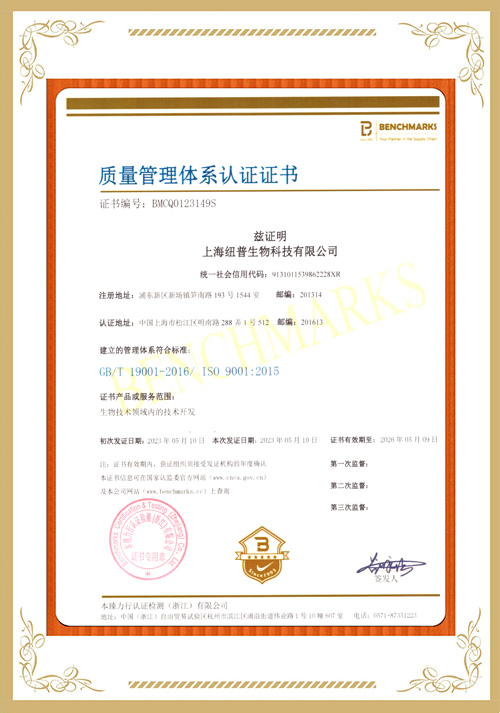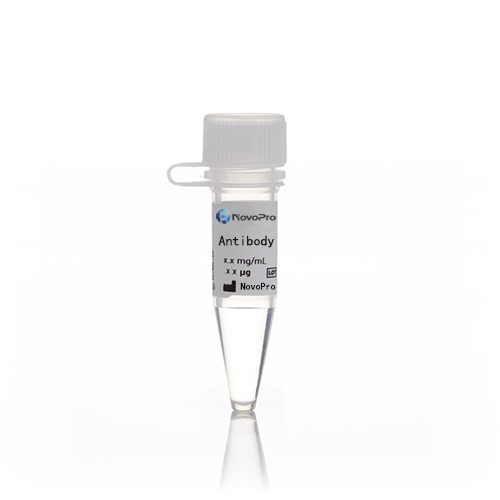- 抗体类型:多克隆
- 抗体来源:兔
- 抗体应用:ELISA, IF, IHC, IP, WB, FC
- 特异性:Human,Mouse,Rat; other species not tested.
产品详情
-
产品名称
Caspase 9/p35/p10 antibody
-
抗体类型
多克隆
-
抗体来源
兔
-
抗体亚型
兔IgG
-
抗体描述
Caspase 9/p35/p10 Rabbit Polyclonal antibody. Positive FC detected in HepG2 cells. Positive IHC detected in mouse lung tissue, human heart tissue. Positive IF detected in HepG2 cells. Positive WB detected in HeLa cells, HL-60 cells, Jurkat cells. Positive IP detected in HeLa cells. Observed molecular weight by Western-blot: 46 kDa
-
抗体应用
ELISA, IF, IHC, IP, WB, FC
-
应用推荐
Recommended Dilution:
WB: 1:500-1:5000
IP: 1:200-1:1000
IHC: 1:10-1:100
IF: 1:10-1:100
-
特异性
Human,Mouse,Rat; other species not tested.
-
蛋白别名
APAF 3, APAF3, Apoptotic protease Mch 6, CASP 9, CASP9, Caspase 9, CASPASE 9c, Caspase9, Caspase-9, ICE LAP6, ICE like apoptotic protease 6, MCH6
-
制备方法
This antibody was obtained by immunization of Caspase 9/p35/p10 recombinant protein (Accession Number: NM_001229). Purification method: Antigen affinity purified.
-
组分
PBS with 0.1% sodium azide and 50% glycerol pH 7.3.
-
储存方法
Store at -20℃. DO NOT ALIQUOT
-
背景介绍
Caspase 9, apoptosis-related cysteine protease (CASP9, synonyms: MCH6, APAF3, APAF-3, ICE-LAP6, CASPASE-9c)is a member of the cysteine-aspartic acid protease (caspase) family. Sequential activation of caspases plays a central role in the execution-phase of cell apoptosis. Caspases exist as inactive proenzymes which undergo proteolytic processing at conserved aspartic residues to produce 2 subunits, large and small, that dimerize to form the active enzyme. Caspase 9 is processed by APAF1; this step is thought to be one of the earliest in the caspase activation cascade.
-
参考文献
- Chen W, Hou J, Yin Y. alpha-Bisabolol induces dose- and time-dependent apoptosis in HepG2 cells via a Fas- and mitochondrial-related pathway, involves p53 and NFkappaB. Biochemical pharmacology. 80(2):247-54. 2010.
- Liu H, Xiao Y, Xiong C, Wei A, Ruan J. Apoptosis induced by a new flavonoid in human hepatoma HepG2 cells involves reactive oxygen species-mediated mitochondrial dysfunction and MAPK activation. European journal of pharmacology. 654(3):209-16. 2011.
- Zheng S, Chang S, Lu J. Characterization of 9-nitrocamptothecin liposomes: anticancer properties and mechanisms on hepatocellular carcinoma in vitro and in vivo. PloS one. 6(6):e21064. 2011.
- Yin Y, Chen W, Tang C. NF-κB, JNK and p53 pathways are involved in tubeimoside-1-induced apoptosis in HepG2 cells with oxidative stress and G₂/M cell cycle arrest. Food and chemical toxicology : an international journal published for the British Industrial Biological Research Association. 49(12):3046-54. 2011.
- Lei JC, Yu JQ, Yin Y, Liu YW, Zou GL. Alantolactone induces activation of apoptosis in human hepatoma cells. Food and chemical toxicology : an international journal published for the British Industrial Biological Research Association. 50(9):3313-9. 2012.
- Yu JQ, Bao W, Lei JC. Emodin regulates apoptotic pathway in human liver cancer cells. Phytotherapy research : PTR. 27(2):251-7. 2013.
- Jia Y, Dong X, Zhou P. The synthesis and biological evaluation of novel Danshensu-cysteine analog conjugates as cardiovascular-protective agents. European journal of medicinal chemistry. 55:176-87. 2012.
- Yin X, Yu B, Tang Z. Bifidobacterium infantis-mediated HSV-TK/GCV suicide gene therapy induces both extrinsic and intrinsic apoptosis in a rat model of bladder cancer. Cancer gene therapy. 20(2):77-81. 2013.


